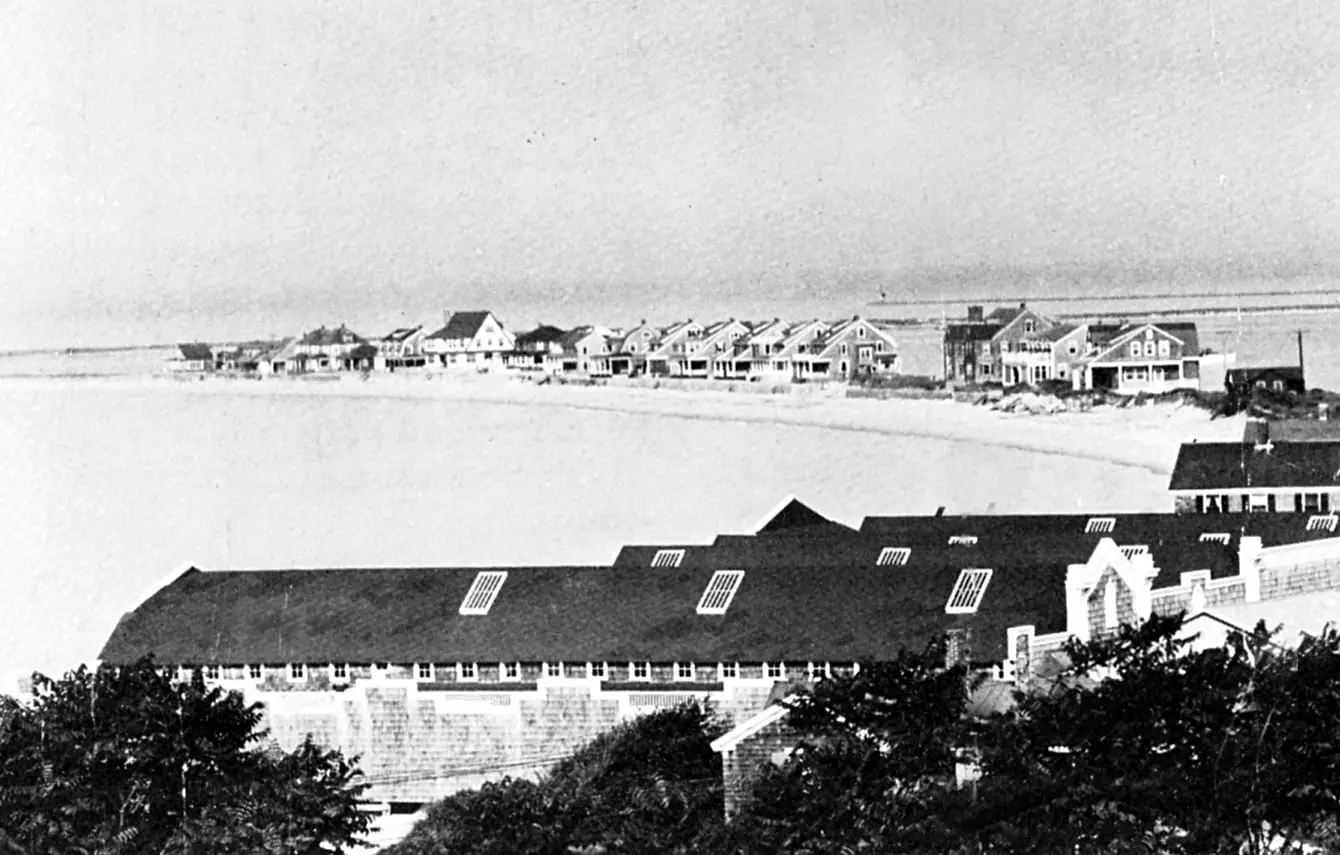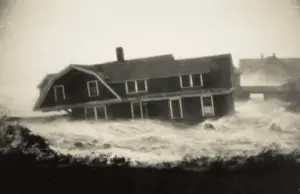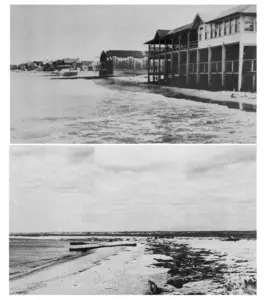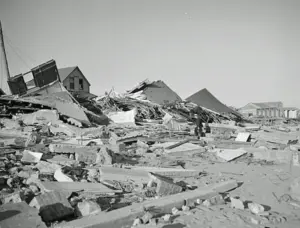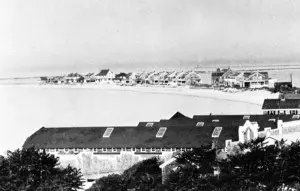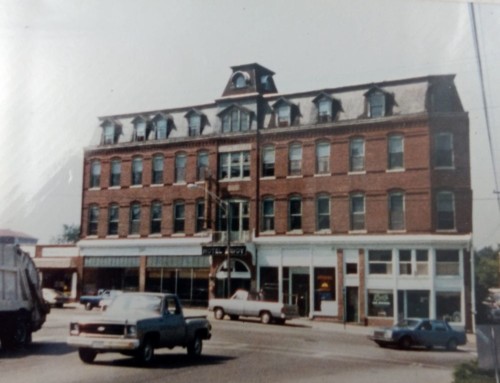On September 21, 1938, the most destructive storm in the history of New England struck without warning: the hurricane of 1938. This is a story of survival against a storm so powerful it literally wiped out whole communities. This savage storm, far more powerful than the average gale, pushed a storm surge ahead of it of at least 20 feet, with many reports of a 20 to 30-foot tidal wave on top of that. It was what meteorologists today would describe as un-survivable.
James Fieser, Vice Chairman of the Red Cross at the time said, “I have never seen a hurricane more complete in its devastation. I can’t recall any instances where whole communities were blown away and left a pile of splintered wreckage more than a mile from their original sites.” And yet for all that, many did survive.
In November 1938, two months after the hurricane, Charles F. Hammond, a Westerly journalist, and publisher, wrote a story about some of the survivors of the storm for a special edition of “Seaside Topics”. I’m indebted to him for much of the personal accounts of the disaster in this story.
It was a quiet morning in Watch Hill on that fateful Wednesday in September. Although it was the end of the season many of the shops were still open and a lot of the summer cottages were still occupied. The morning had been mild and hazy with a brisk breeze blowing. People who took their daily swim on the bathing beach remarked how warm and pleasant the water was.
In Weekapaug, Mrs. John McKesson Camp was hosting a luncheon around one o’clock at the shore. She noticed that the ocean looked restless and spoke of a strange yellow light hanging over it. Around 2:30 p.m. the weather abruptly changed when a squall struck with heavy rain and wind breaking up her luncheon.
In Watch Hill, Bob Loomis was mowing the lawn of his Larkin Road cottage. Around 2 p.m. the wind got so wild that he went to the Coast Guard station and asked the man on duty what kind of storm was expected. The guard said the barometer had been falling all morning and that it might be bad. Loomis noticed an unusual pressure in his ears caused by the incredible low pressure in the storm. The wind and rain were now blowing with such force that he made his way, using the shelter of a seawall, toward the Rodman Griscom cottage. He reached the cottage just in time to see its sun porch windows blow out and the chimney crash to the ground. The servants at the George Valentine Smith’s cottage offered him shelter but he kept going, down to the bathing pavilion, waves were already starting to wash across Fort Road.”
Debris was flying through the air; a garbage can narrowly missed his head. Loomis saw the water rising rapidly. Terrified shopkeepers in the Larkin Block and Bay Street were running for their lives, unable to save anything. Loomis ran over to the fire station where he found Reggie Peck. Above the din of the storm, they heard a harsh ripping sound and saw a tin roof come hurtling through the air and plunging into the bay.
Loomis and Peck decided to move to higher ground and made their way to Peck’s cottage. From this higher vantage point, through the spray, they were able to see the first four or five houses on Fort Road on Napatree Point being washed into the bay, pushed by the force of the hurricane winds. In the space of 15 minutes, the sea had risen to flood the fire station under six and a half feet of water. If they had stayed they would have drowned.
Knowing that Watch Hill was going to need help Loomis walked through the storm all the way to the Westerly Police station. Westerly Police Chief Kessel could hardly believe that the houses on Fort Road were gone. Chief Kessel deputized Loomis and asked him to return to Watch Hill and swear in an emergency police force for the night.
When the storm began there were 42 people still in some of the 39 summer cottages on Fort Road. Little did they realize that in a few short hours, 15 of them would be dead and 27 others would be thrown into the sea and somehow miraculously later rescued.
One of the most incredible stories of survival was that of the family of Geoffrey and Catherine Moore. There were 11 people in the large Moore cottage on Fort Road the day of the hurricane. All 11 would miraculously survive. Mrs. Geoffrey L. Moore wrote to her brother a week after the hurricane describing how the family escaped almost certain death. Their story bears eloquent testimony to the power of nature and the miracle of the human spirit.
Mrs. Moore’s letter reads in part, “Today, Thursday the 29th, is the first day that we could go thru the day in anything like a normal matter. You who have not been thru this terrible disaster cannot possibly imagine how crippled we were here after our rescue with no lights, telephones, cars, clothes, equipment of all kinds, and the hectic business of denying that you were dead for two days after the rescue and that Geoffrey had died of a heart attack. The whole thing was like a bad dream. You see I can’t get started on the real story. I dread it; it simply wears me out every time I think of what happened on that dreadful day.”
Mrs. Moore goes on to tell how the day started out clear with a brisk wind blowing from the southeast. They were doing laundry and had to double pin the clothes to the line. There followed a series of minor mishaps including Geoffrey having some chest pains and the doctor being called. The doctor ordered three days of bed rest.
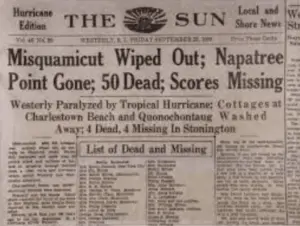
At this time Mrs. Moore and Geoffrey still didn’t realize the danger they were in. Things got progressively worse. Andy Pupillo arrived, having just picked up the children, and reported that they’d just made it. The power was now out and the storm was getting much worse. Mr. Moore suggested they put the children in the car for safety and Mrs. Moore got them all downstairs but the children refused to get in the car without their pets. The seven cats and their Newfoundland, Major, were loaded in the car with them. Mrs. Moore ran to the kitchen and got bread, butter, and milk and took them down to the car, and told Aunt May to give the children some and to play the radio.
In part two of our story, we follow the family as the house comes down around them and of their miraculous escape.
